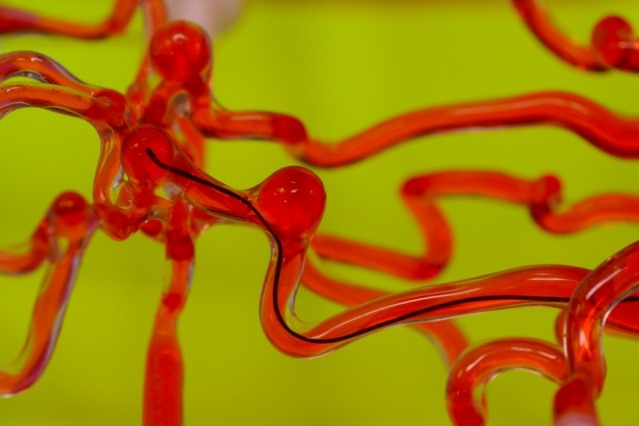
Liber Leuitas Animi: The Stimuli of Politickal Ideologies

Much of my work over the last few years has focused on the hidden forces within the human body and from without in which we act as Food for the Moon by these organisms that seek to control, shape, legislate, and if needed be, destroy our modern reality.
As part of my studies into the history of the various political ideologies that have helped “mold our modern era” such as the idea of liberalism in Modernity, I came across some fascinating history connecting the current liberal movement to a much more older form of governing the people that can be found in the Ancient Roman Empire.
You see, in Old Rome, the liberals were the plebians who today are called citizens in the West and would-be followers and worshipers of the god Liber who was a god of viticulture and wine, fertility and freedom. Aspects of the cult were considered very un-Roman and asserted plebeian rights to ecstatic release, self-expression, free speech, and a focus for civil disobedience.
The cult was described to have spread “like a plague” amongst the lower classes, morally weak, effeminate males and anyone who may have leuitas animi (fickle or uneducated minds) but even Rome’s elite were not immune.
Today, among many liberals, we see many of the exact same traits and concepts as if they are taking notes from the old days of Rome. Yes, even our so-called elite in the U.S. like in Hollywood and Washington seem to be internally infected, filamentary connected and unphilosophically driven.
To be honest, it feels like we are now in a global Roman replay on steroids where the lead actors upon the fringe are infecting the entire Culture of the decaying Western world.
My children, your children, and everyone’s children are at stake here to this global Liber virus of leuitas animi.
What is interesting to those people who have an interest in the history, science, and psychology that drives political beliefs whose thought-forms appear to travel into the morphic fields of our nations’ party-centric ideologies is that researchers are starting to discover that there are “psychophysiological stimuli affecting these very political ideologies.”
A recent study claimed that “conservatives react with higher levels of electrodermal activity to threatening stimuli than liberals.”
Meaning, for example, a conservative is more alert and sensitive to parasitism which would make them react and or defend against parasitic attacks.
In the study, the researchers “assessed reliably, electrodermal activity in the replications and published studies captures individual differences in the physiological changes associated with attention shifts, which are unrelated to ideology.
In contrast to psychophysiological reactions, self-reported emotional reactions to threatening stimuli are reliably associated with ideology.”
Here is a summary of the study and a copy of the PDF below.
The Psychophysiology of Political Ideology: Replications, Reanalysis and Recommendations
Going back to the 1950s, studies in both political science and political psychology have proposed that individual differences in political ideology do not just reflect differences in narrow political considerations but, rather, express broader sets of individual differences pertaining to personality, basic values or broader social outlooks (Hibbing et al., 2014; Jost, 2006).
In particular, a common argument has been that a conservative political ideology is likely to be endorsed by individuals motivated to reduce threats in their daily lives. In this view, so-called “threat-sensitive” individuals find the order inherent in a conservative ideology attractive.
A large range of studies support this basic assertion using diverse methods, including assessing differences between liberals and conservatives in self-reported need to reduce insecurity (e.g., Jost et al., 2009), observing the living spaces of liberals and conservatives (e.g., Carney et al., 2008), assessing personality differences between liberals and conservatives (e.g., Gerber et al., 2010) and investigating the impact of threatening events (e.g., terrorist attacks) on public endorsement of conservative policies (e.g., Merolla & Zechmeister, 2009).
While psychologists have turned towards neuroscience in understanding the biological underpinnings of political ideology, political scientists have turned towards techniques from psychophysiology. Whereas measures obtained via neuroscience methods are expensive and require extensive training, psychophysiological studies are far less costly to conduct (Soroka, 2019).
In particular, this work has focused on the measure of skin conductance or electrodermal activity (EDA), an index of sympathetic nervous system arousal obtained by measuring microscopic changes in sweat production via electrodes on the fingertips (Figner & Murphy, 2011). The seminal finding was established by Oxley et al. (2008) who found that conservatives responded with higher EDA than liberals when viewing images of diverse threats such as spiders, maggots and guns.
Since then, a number of follow-up articles have been published, all using psychophysiology to shed light on the psychological underpinnings of political ideology (Dodd et al., 2012; Knoll et al., 2015; Smith et al. 2011).
[pdf-embedder url=”https://www.gnosticwarrior.com/wp-content/uploads/2020/01/The-Psychophysiology-of-Political-Ideology-Osmundsen-et-al-JOP-Preprint-2020-01-14T15_51_59.732Z.pdf” title=”The Psychophysiology of Political Ideology – Osmundsen et al – JOP Preprint-2020-01-14T15_51_59.732Z”]

Moe is the founder of GnosticWarrior.com. He is a father, husband, author, martial arts black belt, and an expert in Gnosticism, the occult, and esotericism.





